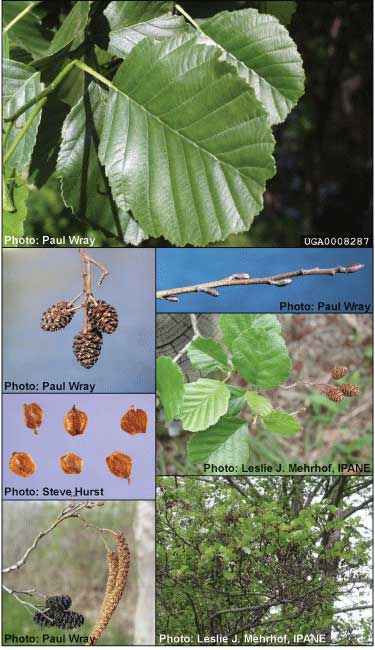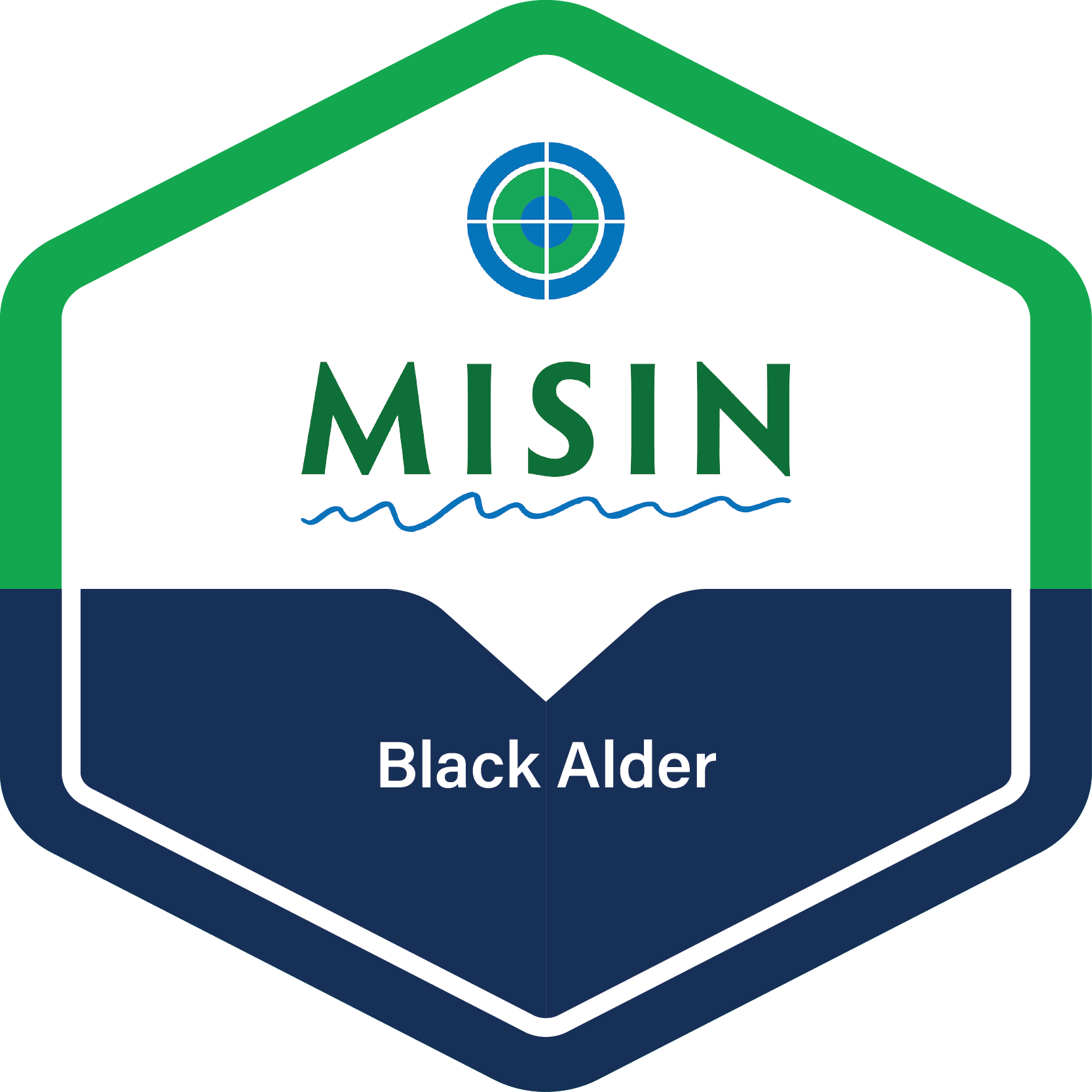Black alder (Alnus glutinosa)
 Synonyms: Alnus alnus
Synonyms: Alnus alnusCommon Names: European alder, European black alder
Description: Capable of displacing native vegetation; fixes nitrogen; has been planted on highly disturbed or infertile sites and for windbreaks; vulnerable to tent caterpillar.
Habit: Deciduous; medium tree; ranging from 9-18 m (30-60 ft) in height and 25-38 cm (10-15 in) in diameter; narrow pyramidal shape when young, becoming more irregular with age.
Leaves: Simple, alternate, broadly rounded to truncate or notched at the apex, 5-13 cm (2-5 in) long and 5-10 cm (2-4 in) wide, toothed leaf margin, young leaves sticky to the touch, fall leaves green or brown in color.
Stems: Dark green-brown, smooth or rough, speckled with short lenticels, bark with prominent warty strips; buds stalked.
Flowers: Male and female flowers in separate structures, male flowers borne on long narrow catkins, female flowers borne in small woody structures resembling pinecones; bloom March through May.
Fruit and seeds: Small, woody, pinecone-like structure borne on long, narrow stalks; seeds are small and narrowly winged.
Habitat: Native to Eurasia and North Africa; prefers full sun and wet soil but tolerant of drier soil and a range of pH conditions; found along rivers, in wetlands and moist forests.
Reproduction: By seed and spreading roots.
Similar species: Native speckled alder (Alnus rugosa) has leaves with a distinct (acute) tip; usually shrubbier than A. glutinosa.
Monitoring and rapid response: Monitor pond, river and wetland margins; distinguishable year-round by its rounded leaves, catkins, cones and stalked vegetative buds. Begin control efforts in highest quality areas. Hand pull seedlings and remove mature trees that provide a source of seed. Cutting, girdling, and mowing are ineffective unless cut stumps are treated with herbicide to prevent resprouting. Credits: The Michigan Natural Features Inventory (MNFI) has partnered with MISIN to provide the information in this fact sheet. Species images and/or information were used with permission from "A Field Identification Guide to Invasive Plants in Michigan's Natural Communities" and "A Field Guide to Invasive Plants of Aquatic and Wetland Habitats for Michigan.
Common Name: | Black alder |
Scientific Name: | Alnus glutinosa |
Family: | Betulaceae (Birch) |
Duration: | Perennial |
Habit: | Trees |
USDA Symbol: | ALGL2 |
 View Species Course |
|
